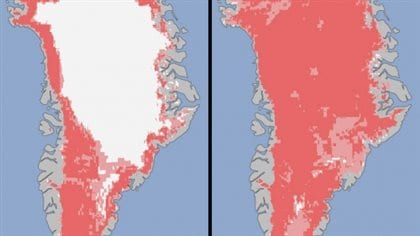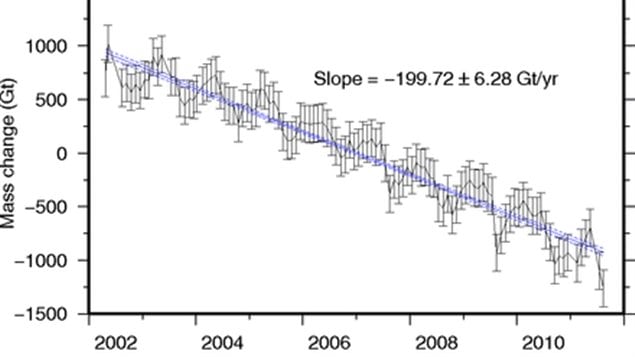Researchers studying Greenland’s massive ice-sheet are making some worrisome findings.
Danish-born glaciologist Jason Box who has studied glaciers for two-decades is in the second year of a study called the Dark Snow project. He is with the Geological Survey of Greenland and Denmark.

They found that soot is covering immense areas of the ice-sheet, darkening in and increasing its heat absorbtion, causing melting to increase. The soot may be from a variety of sources including burning of coal, diesel, dung and wood.
It’s also thought that greatly increased soot this year is due to the record number of fires in Canada’s Northwest territories Some 3.5 million hectares of forest went up in smoke in the NWT alone this year, while many other huge wildfires occurred in all provinces in Canada’s boreal forest area. Although it’s considered the end of the fire season, several wildfires are still burning.
Melting attributed to conditions created by human-induced climate change.
Mike Flannigan, of the University of Alberta Director of the Western Partnership for Wildland Fire Science says, forest fires used to average 1 million hectares a year, but now average double that saying its due to human induced climate change.
A French research team also reports increased dust covering the glacier. They indicate it may come from elsewhere in the Arctic as snow cover melts earlier in the season due to climate change.

As the Greenland sheet is darkened, its “albedo” or the reflective quality of the white snow and ice is diminished. Scientists say even a slight reduction in the albedo will have a significant affect on the ice sheet.
A recent study using the European Cryosat2 and based on reprocessed and improved data between 2003 and 2008, reports an average trend of ice-loss of Greenland’s ice sheet of over 190 cubic kilometers per year. Analysis of ice loss from GRACE estimates are somewhat lower but still surprisingly worrisome at 145 cubic kilometers a year.
Box says the increased melting will have an effect on sea-level rise around the world.
The findings of Jason Box and his team have yet to be peer-reviewed but he released the images this week in hopes that those attending the international climate talks at the UN would get the message.
Journal Cryosphere : ice loss abstract
Mapping Greenland’s mass loss in space and time
Dark snow project video







For reasons beyond our control, and for an undetermined period of time, our comment section is now closed. However, our social networks remain open to your contributions.